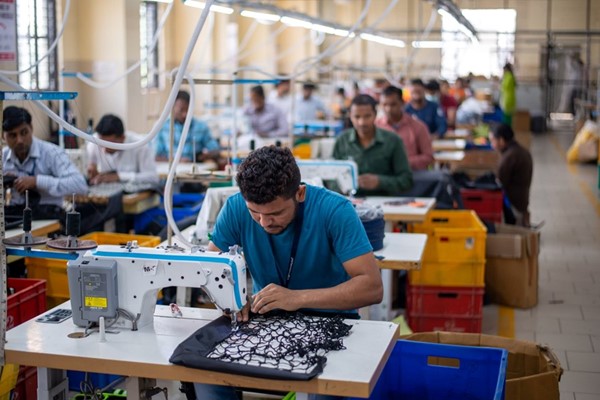
In the dynamic world of fashion, staying ahead of the curve is crucial for clothing manufacturers. From sustainable practices to technological advancements, the industry is experiencing rapid changes that are reshaping the way garments are produced. As a clothing manufacturer, embracing these trends can not only enhance your competitiveness but also contribute to a more sustainable and efficient future. Let's dive into some of the most prominent trends shaping the clothing manufacturing landscape.
1. Sustainable and Ethical Practices:
Consumers are increasingly conscious of the environmental and ethical impact of their purchases. This has prompted clothing manufacturers to adopt sustainable and ethical practices throughout their supply chains. From using eco-friendly materials and reducing water consumption to ensuring fair labor
practices, incorporating sustainability into manufacturing processes is a trend that's here to stay.
2. Technology Integration:
The Fourth Industrial Revolution is making its mark on clothing manufacturing. Automation, artificial intelligence, and the Internet of Things (IoT) are transforming production lines, enhancing efficiency, and reducing errors. Cutting-edge technologies like 3D printing are also enabling rapid prototyping and customization, enabling manufacturers to create unique pieces with precision.
3. Fast Fashion to Slow Fashion:
The fast fashion model, known for its quick turnover of trendy clothing, is being challenged by the slow fashion movement. Consumers are valuing quality over quantity and seeking timeless pieces. Clothing manufacturers are adapting by focusing on producing durable garments with timeless designs, thus reducing the strain on resources caused by rapid production cycles.
4. Customization and Personalization:
Mass customization is gaining momentum as consumers seek clothing that aligns with their individuality. Clothing manufacturers are incorporating technology to allow customers to personalize designs, sizes, and even fabric choices. This trend not only enhances customer satisfaction but also reduces waste by producing items that are truly wanted.
5. Digitization of Supply Chains:
Digital platforms are revolutionizing supply chain management. From tracking raw materials to monitoring production progress, digitization ensures transparency, minimizes disruptions, and allows for real-time decision-making. This trend is essential for maintaining a flexible and resilient manufacturing process.
6. Circular Fashion Economy:
The concept of a circular economy is gaining traction. It focuses on designing, producing, and recycling garments in a way that minimizes waste and maximizes the lifespan of clothing. Manufacturers are exploring innovative ways to repurpose materials and create products that can be easily recycled or upcycled.
7. Virtual Sampling and Fitting:
Traditionally, clothing prototypes required significant time and resources. Virtual sampling and fitting technologies are changing this by allowing manufacturers to create digital prototypes, reducing waste and lead times. This trend is especially relevant in an era where speed and efficiency are paramount.
8. Reshoring and Local Production:
The pandemic exposed vulnerabilities in global supply chains. As a result, some manufacturers are considering reshoring or diversifying their production to minimize risks. Localized production can lead to reduced transportation emissions and more control over quality.
Conclusion:
In conclusion, the clothing manufacturing industry is undergoing a transformative phase, driven by consumer demands, technological advancements, and sustainability imperatives. Manufacturers that embrace these trends can position themselves for success in a rapidly changing market. By adopting sustainable practices, integrating technology, focusing on quality, and remaining agile, clothing manufacturers can thrive in this dynamic landscape.